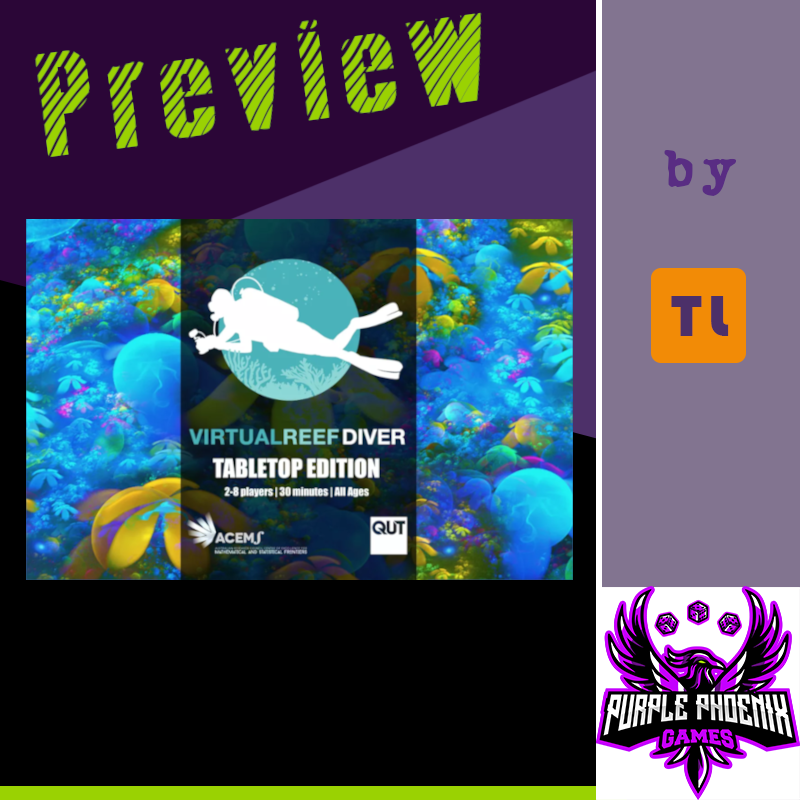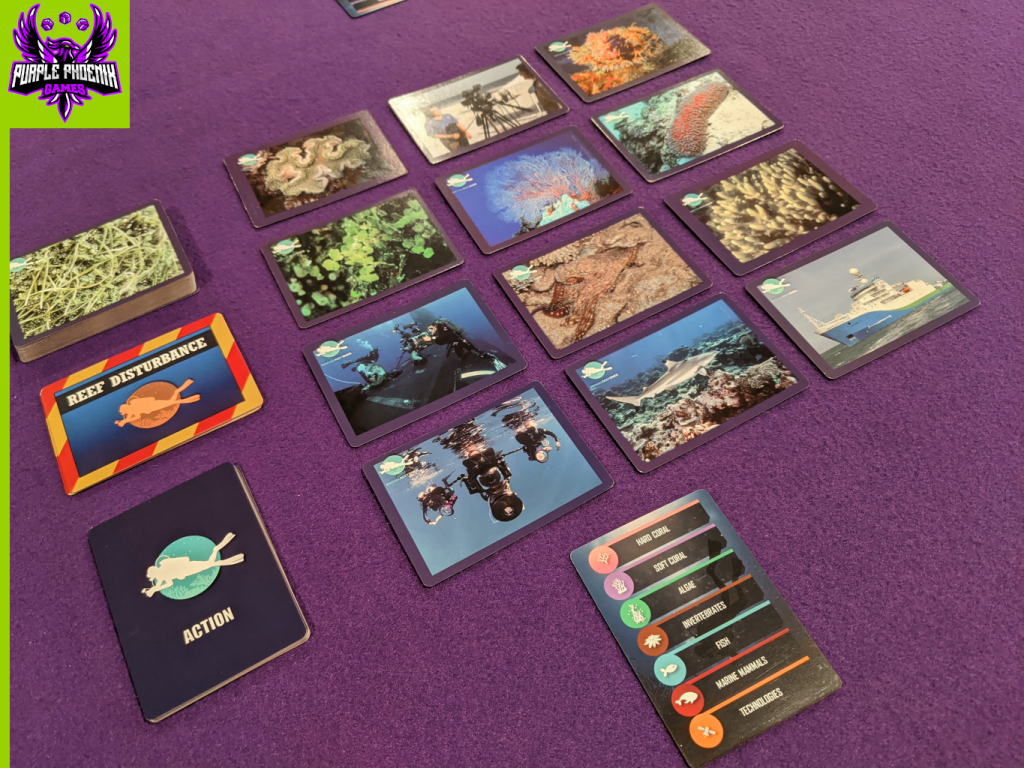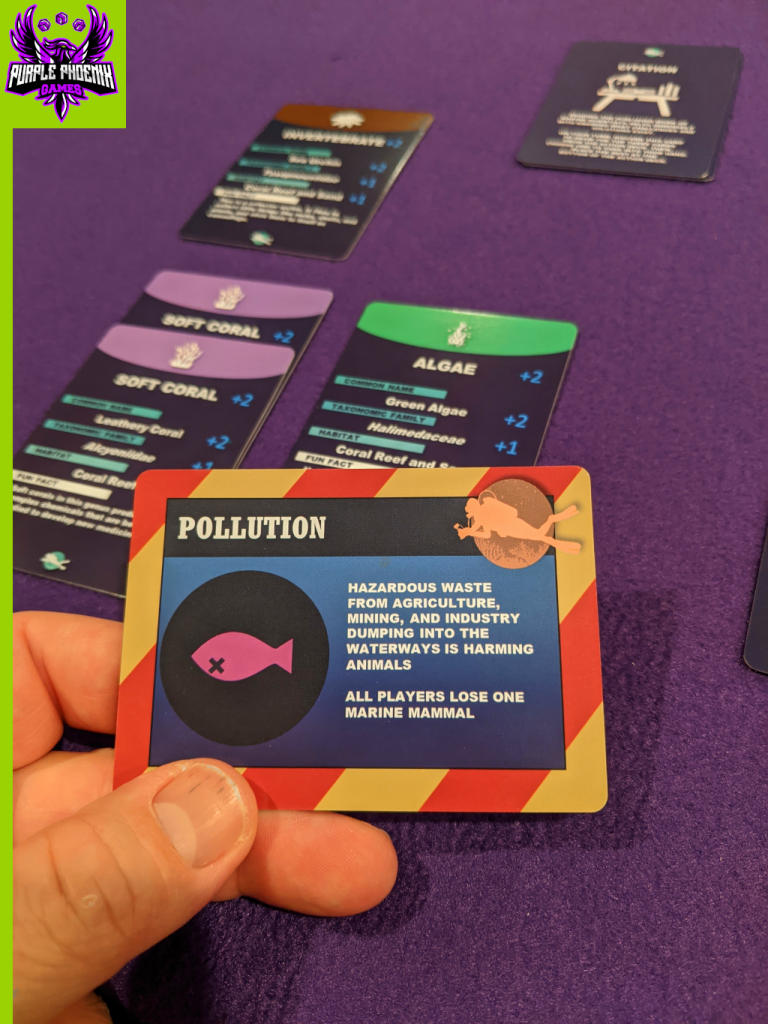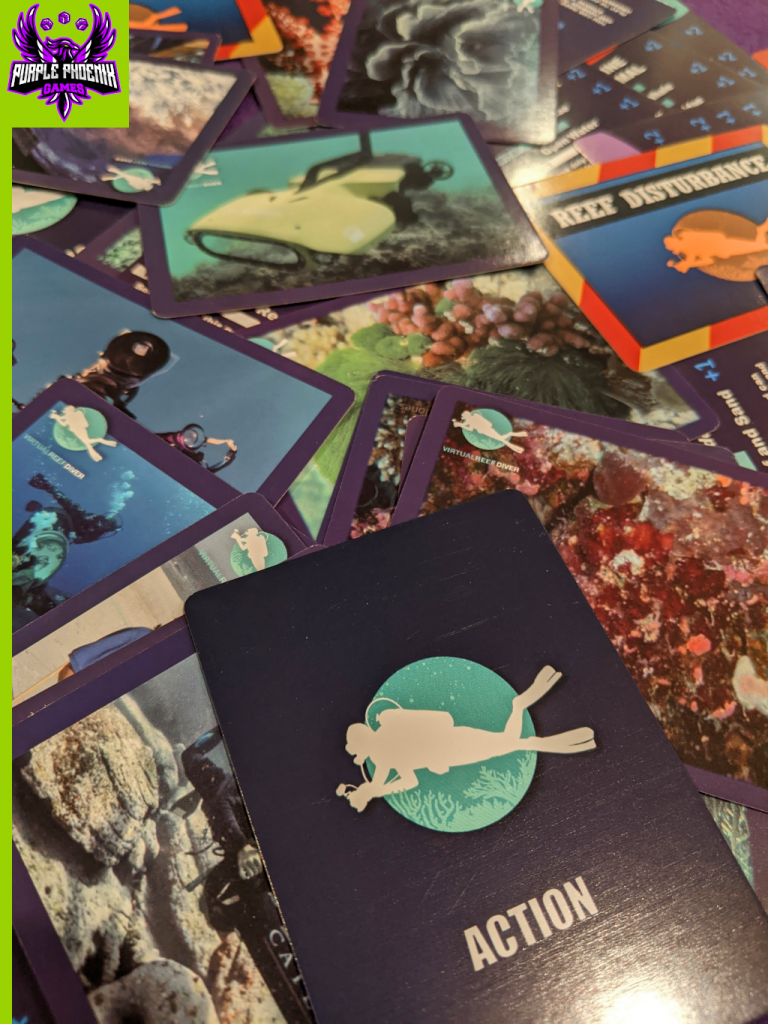
Ahh, ze Great Barrier Reef. How I would love to see you! To swim with ze fishies and see ze beautiful colors! But alas, I am no great diver, and have only snorkled once – in ze Caribbean. I am very interested in ze marine life on ze reefs surrounding Australia, and so when I heard of a game from one of our favorite publishers (who happen to be Australian) featuring photos of ze Great Barrier Reef I knew I had to take a look.
| Virtual Reef Diver (2020) | Half-Monster Games |
| 2-8 Players | 15-30 minutes |
| Ages 8+ | BGG Weight – (not yet available) |
Virtual Reef Diver is an educational card game that helps to bring awareness to happenings of the Great Barrier Reef and even implements ways for players to participate in the studies of this natural wonder. The winner(s) of the game is (are) the team who scores the most points at the end of three rounds, and also hopefully learns several new things along the way.
DISCLAIMER: We were provided a copy of this game for the purposes of this review. It is not my intention to detail every rule in the game, but to give a general idea of the feel of the game flow. You are invited to download the rulebook, purchase the game through the publisher directly, or through any retailers stocking it. -T
To setup, shuffle the Action card deck, the Reef Disturbance deck, and the Reef decks separately, placing them on the table. Each team, or player, may be given a Classification Card (reference card) as well. From the Reef deck deal 12 cards face-up on the table in a 3×4 (or 4×3 whatever) grid. Each round a new set of 12 cards will be dealt to the table. Determine the starting player/team and the game may begin!

Players will decide at the beginning of the game which mode they wish to play: Standard or Advanced. I will be previewing the Standard mode. On a turn a player will choose a card from the grid and attempt to identify its type: Hard Coral, Soft Coral, Algae, Invertebrates, Fish, Marine Mammals, or Technology. If correct, the player will collect the card as a trophy and it will be worth VPs at the end of the game. The next player may then take a turn identifying the type of card and collecting if correct, or leaving on the table if incorrect.
All cards are worth VPs except the Technology cards. These, once correctly identified, will allow the player to exchange it for an Action card to be used in the future. Action cards can be very powerful at different times during the game.
Once all 12 cards have been taken for the round the players will reveal a Reef Disturbance card. These typically will have players discarding cards of a certain type, or several cards at once. Some Action cards will negate these effects, so having them ready is great strategy. The grid may now be replenished and the second round started. The game ends at the end of the third round and players count up points to determine the winner!

Components. Again, while this game is in production, I treated it as a preview, and these are final components. That said, this game exists to benefit the Australian Government-funded citizen science website ACEMS. Further, this game is a bunch of cards in a box. The photos on the main Reef cards are mostly quite nice, with a couple looking perhaps a little outdated. The other graphics on the game are fine. They don’t get in the way, and are functional. The cards themselves are also fine quality. Nothing in the box is exquisite nor subpar at all.
The gameplay is something that I am struggling with as a reviewer. You see, this is a VERY different game depending on the mode you play. I will probably always play it on Standard mode because I can guess what type a card may be, but the Advanced mode also awards extra points for identifying the common name, taxonomic family (scientific name), and habitat of each card’s subject. That is for eggheads, man! I’m just a normal American-educated gamer. I don’t know that stuff! So the Standard mode is relatively easy to play and be good, where the Advanced mode is for those times when you have, let’s say, a Scrabble or Chess snob who revels in being the most intellectual person in the room. That’s not at all a bad thing, and I hope any real eggheads know I am kidding around. I am merely jealous at how smart many people are.
That being the case, this game would work well for a group of younger gamers eager to learn about the marine life on the Great Barrier Reef, or those looking for a relaxing quasi-trivia style card game. Need to amp it up and play on Advanced mode? Go for it. I’ll still be flailing about like a clownfish out of water trying to understand the difference between hard and soft coral and how to distinguish them. Seriously. Take a look for yourself and help out a VERY worthy cause in the process.

